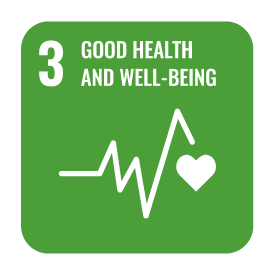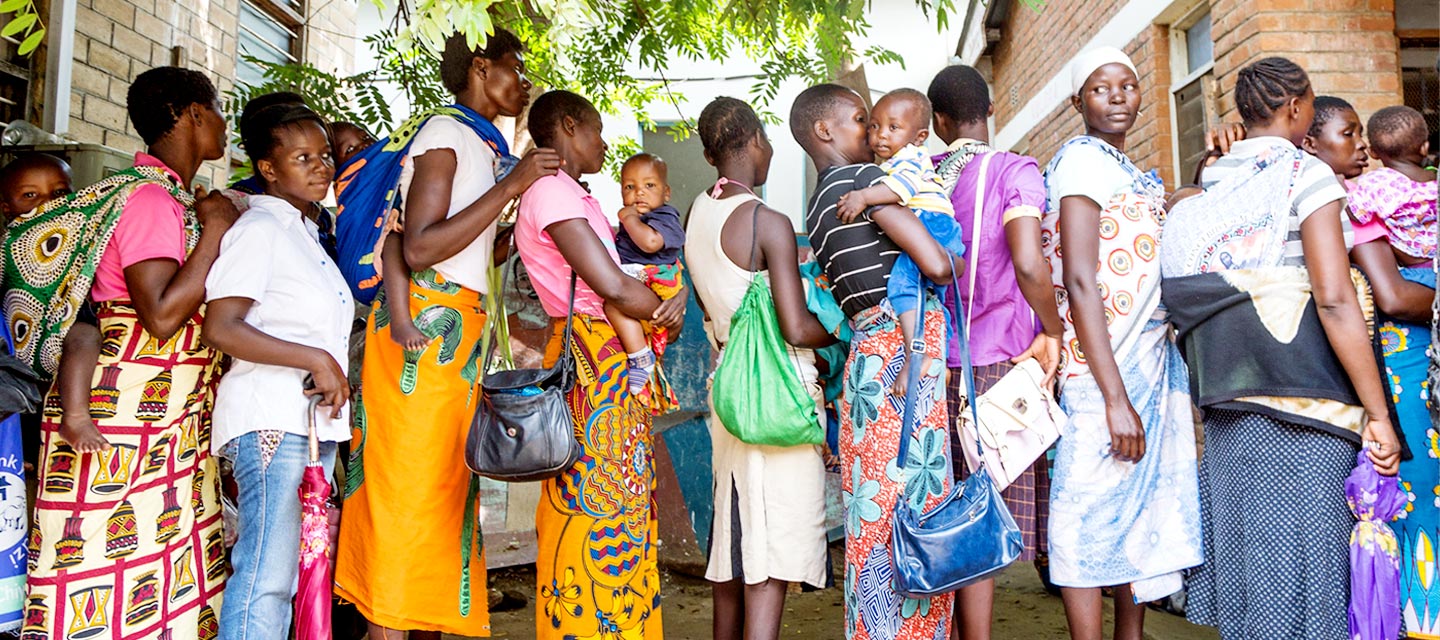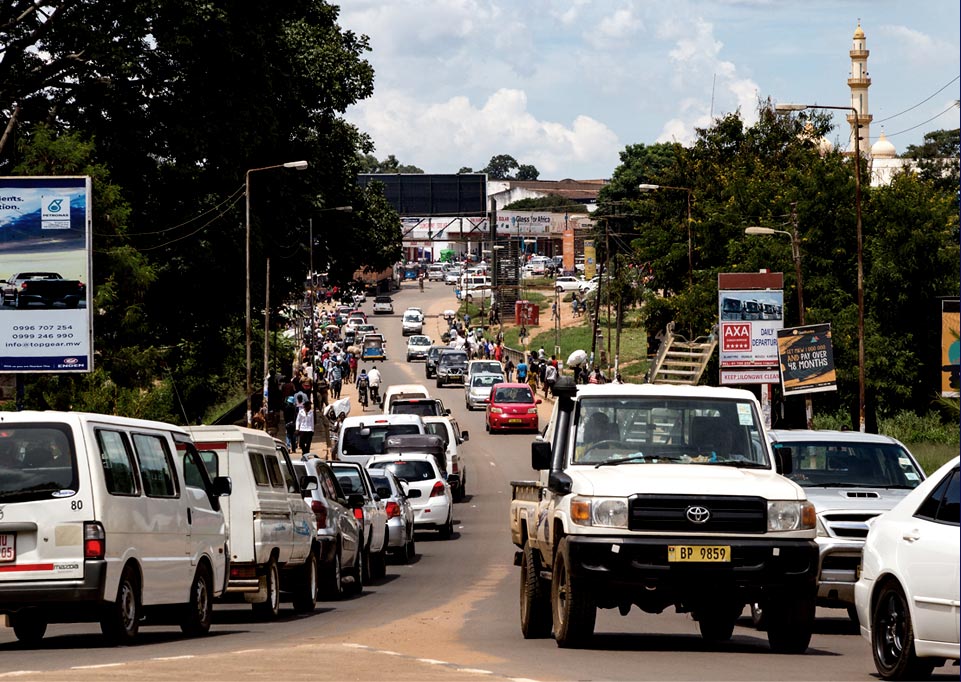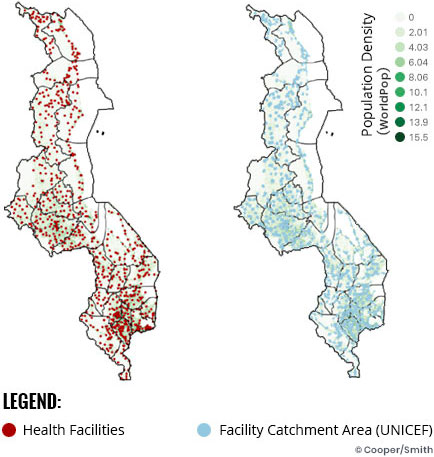
DATA FOR DEVELOPMENT
MALAWI
YEAR STARTED: 2017
PROJECT
Big data for development:
A study in how new data sources optimized health facility placement and emergency response efforts for COVID-19 in Malawi
Supported SDG


OBJECTIVES
- This project aimed to demonstrate how a combination of mobile network operator data and other data sources can better inform and improve the availability of health services to underserved populations.
- The project also sought to use a combination of MNO data and other data sources to identify populations at risk of the COVID-19 pandemic and its impact.
- It further sought to explore the institutionalization of using MNO data in combination with other data sources across development sectors beyond health to enhance public decision-making.

PROBLEM STATEMENT
- Malawi’s population is growing, especially in cities. Many people do not have access to primary health care facilities. People move because of floods and droughts. The rapid population growth and seasonal population movements shift the health care needs between locations, causing certain population segments to live further from health facilities.
- The Malawi government has found it difficult to determine how the COVID-19 pandemic could potentially unfold and which areas or populations could be at risk.
- Use of new data sources and models for decision-making is yet to be institutionalized beyond the health sector.
APPROACH
- The project sought to develop a dynamic model using previously untapped, anonymized mobile phone data, helping Malawi’s Ministry of Health understand population growth and migration.
- It triangulated mobile network data with population density and disease burden data while protecting and respecting individual privacy.
- The project worked to spur iterative decision-making, better data use in routine budget execution, and program planning.
- It created COVID-19 epidemiological and risk models using real-time MNO data and other data sets to identify the areas at risk and the epidemic impact.
- The project supported the institutionalization of proven data models to be made available for replication and routine use across development sectors beyond health through the National Statistics Office (NSO).
- It established a national Data for Development Technical Working Group led by the NSO to enhance routine and replicable use of data across development sectors beyond health.
SUMMARY OF FINDINGS FROM RESEARCH


An estimated 7.73 million Malawians, or 44.7% of the population, live more than five kms walking distance from a clinic or health post.
With no new health facilities, 9.7 million will be uncovered by 2023.

Malawians migrate from the central region to the south during the rainy season, shifting the burden of care.
If floods render roads inaccessible, some facilities will be overwhelmed.

Optimized allocation of 900 health facilities will ensure that 95% of Malawians have easy access to a health facility by 2023.
The model uses population movement, disease burden, and disability adjusted life years.


Detecting anomalous gatherings of large groups of people could identify epicenters of COVID-19 infections.
The model informs the ministry of anticipated COVID-19 hotspots.
RESULTS
The Ministry of Health is currently using the health facility placement optimization model built on this project to inform the deployment of more than 900 new health posts across the country between 2018 to 2023. The model will ensure that more than 95% of Malawians live within a five km radius of a health facility.
We compared population projections using WorldPop and our MNO data model to the 2018 country census at the district level and found a less than 5% discrepancy.
The epidemiological data models built in response to the COVID-19 pandemic have empowered decision-makers with refined epidemic scenarios by making epidemiological and risk models more accurate.
The data models have uncovered potential epidemiological patterns by identifying potential hotspots and disease spread patterns that could be investigated and, if confirmed, addressed.
There has been reduced response time to the COVID-19 pandemic because of the use of real-time data.
There is demand for use of MNO data in combination with other data sources to answer key development questions in other sectors beyond health, such as education, agriculture, water, and sanitation, through the institutionalization of the data models within the National Statistical Office.
There has been demand to replicate the data models built in Malawi in other individual countries and regional country blocks. For example, our implementing partner Cooper/Smith has since replicated some of the epidemiological and risk models built in Malawi in Burkina Faso and is seeking to replicate them for the 14 countries in the West Africa Health Organisation.
WATCH: OUR DATA WORK IN MALAWI
OTHER CONSIDERATIONS
It is imperative to work with local stakeholders in building the data management capacity at a governmental agency to provide ministries with MNO data analytics if routine use of such data is to be sustained.
Setting up a co-creation value model with MNOs to enable the continuous and sustainable sharing of analytics from MNOs is key.
PARTNERS
DIAL convened a diverse range of stakeholders, including donors, multilaterals, NGOs, and the government, to undertake the Malawi data demonstration model.








